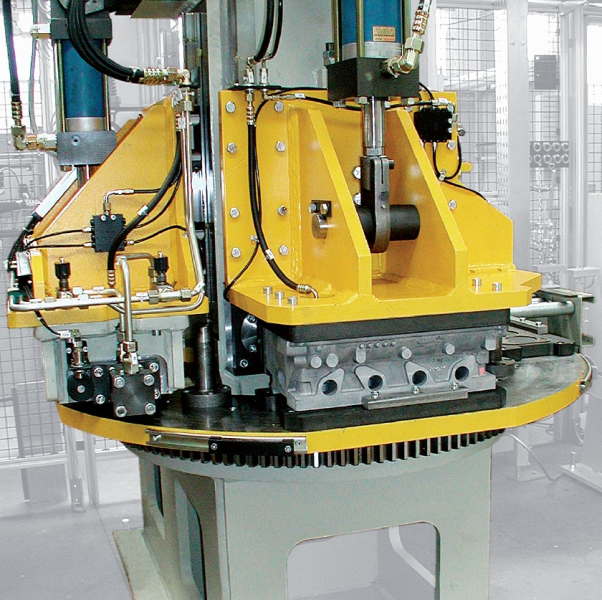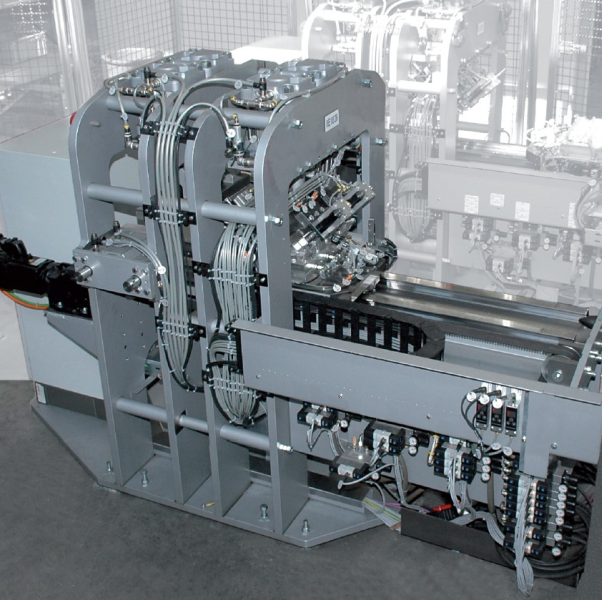Differential pressure test
Process for testing the impermeability of castings.
In a differential pressure test (pressure testing), the casting is pressurized. After a short killing period, the casting is separated from the compressed air supply and the pressure difference is measured after a certain waiting period. If there is a leakage, the pressure drops. The differential pressure test is one of the most cost-effective methods of density test procedures without persons being involved (see Leak test). Since not the amount of released air coming from the leakage is detected by the pressure change caused by it, the differential pressure test is an indirect procedure. The following dependencies have to be taken into account for the process:
I) Volume dependency:
The same leakage causes different pressure changes depending on the volume. If the volume is small, a small leakage causes a higher pressure difference compared to a relatively small leakage in larger measuring volumes which causes nearly not pressure change at all.
II) Temperature dependency:
A temperature change also causes a pressure change in a closed volume. For example, an increase in temperature can result in an increase in pressure despite a leakage. However, a temperature drop can result in an apparent pressure drop dispite a leakage.Since castings generally are volume-stable testing chambers which can be sealed an where there are nearly no temperature changes during the tests, this process guarantees a high reliability. Possible casting leakages can be examined by using a leak test device.Depending on the requirements, leak testing devices are available as rotary tables (Fig. 1, Fill GmbH) or leak test cells (Fig. 2, Fill GmbH).
Additional references:
Leak test
Water bath test



